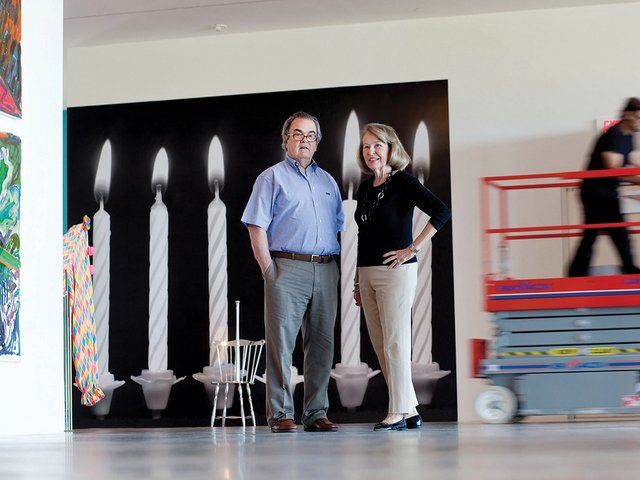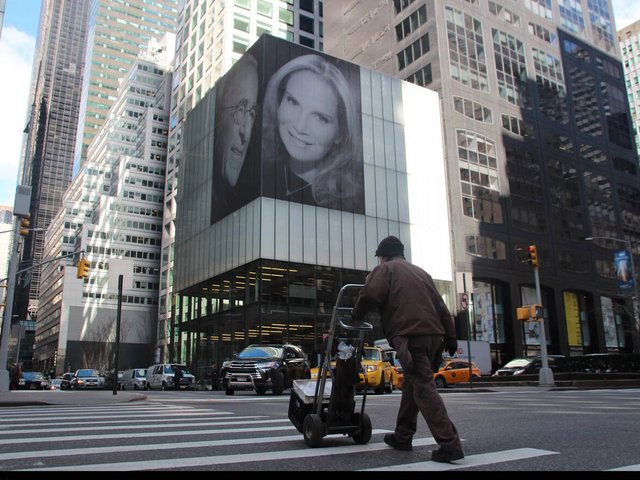“Filling your interiors with pieces that reflect your personality and interests is what makes a house a home,” said Amelia Walker, the specialist head of private collections at Christie’s in London, promoting the auction house’s Three Dealing Dynasties: London, Paris, Geneva sale earlier this year. She added that mixing works of art from different periods creates a “layered appearance which delights the eye and sparks intrigue”.
Christie’s sale featured opulent, predominantly French 18th-century furnishings from three long-established but unnamed European dealerships that “have been at the centre of the international art market for almost a century”, according to the auction house’s website.
In the currently subdued market conditions, this auction of 247 decorative but hardly museum-quality pieces from undisclosed trade sources—much of the furniture was “attributed to” or “possibly by” the named makers—was never going to spark much in the way of bidding fireworks. Some of its decorative 18th-century Asian objects did attract competition, and a quirky Régence-era ormolu-mounted Japanese porcelain table fountain in the form of a carp (around 1725-30) sold for £239,400 against a low estimate of £30,000. But the sale raised only £2.8m overall, with around 27% of the lots passed.
What has this outdated stuff got to do with the top end of today’s international art market? Well, 100 years ago, when these unnamed “dealing dynasties” were first setting up shop and the maximalist, art-and-antiques-crammed decorative style known as “le goût Rothschild” (the Rothschild taste) was still the way most very rich people appointed their homes, these sorts of objects were the top end of the market.
Of course, the tastes of the wealthy have changed. So too have their spending habits. At the moment, auction revenues are down and the international houses are cutting staff and reducing sales; for the first time in decades, for instance, Christie’s did not hold a major evening art auction in London this June. At a time when some people are wondering whether today’s art trade will survive, thrive or dive, it just might be instructive to look at how the elites’ taste in interior decoration—and living habits—have evolved over the years.
The ‘treasure house’ paradigm
Le goût Rothschild is the term most commonly used to describe the free-spending attempts by the newly wealthy of the Gilded Age to accumulate works of art and furnishings that replicated the “treasure house” allure of Europe’s grandest ancestral homes. The superb Frick, Wallace and Nissim de Camondo collections in New York, London and Paris, respectively, all exemplify this taste. But so too do the sumptuous collections put together by the various descendants of the fabulously wealthy German banker Mayer Amschel Rothschild across Europe, such as that formed by Baron Ferdinand de Rothschild at Waddesdon Manor in Buckinghamshire.
“A visit to a Rothschild collection was always a memorable experience,” wrote the British art historian and former National Gallery director Kenneth Clark in 1963. “Hushed, inviolate, almost indistinguishable from one another, they were impressive not only by their size and splendour, but by a sense of solemnity of wealth which hung about them.”
Ferdinand de Rothschild destroyed the receipts of his purchases for Waddesdon Manor because he was “afraid that his descendants would regard the prices he paid as excessive”
Le goût Rothschild still has its moments in today’s art market, particularly when a named collection comes up for sale. Christie’s Rothschild Masterpieces auction in New York last autumn raised $62.6m (with fees), and its 2022 sale of the very goût Rothschild collection of Hubert de Givenchy in Paris took €118.1m (with fees), with a pair of exceptionally flashy, late 18th-century French bronze and ormolu girandoles making a premium-inclusive €5m.
Yet the modest four- and five-figure prices for most of the Rococo objets d’art in Christie’s Three Dealing Dynasties sale are more typical of this category’s standing in 2024, casting the results as pale reflections of the huge inflation-adjusted sums collectors were paying for similar fare more than 100 years ago. According to Frank Herrmann’s 1972 book The English as Collectors, Ferdinand de Rothschild even went so far as to destroy the receipts of his purchases for Waddesdon Manor because he was “afraid that his descendants would regard the prices he paid as excessive”.
Minimalist consensus
There is no escaping the massive contrast between the immersive, eclectic collecting environments created by the wealthy in the Gilded Age and the more minimal interiors of today’s leading contemporary collectors. For a glimpse of the latter, there may be no better resource than the Instagram account of the collector-centric website Larry’s List. There, collectors, dealers and interior designers around the globe post pictures of the interiors they have created, to be admired by around 179,000 followers.
Scrolling through the nearly 3,200 posts clarifies that a certain look prevails worldwide: white walls; a big, colourful statement painting (ideally a Basquiat, Stella or Condo); a Jean Royère sofa (or similar); a Giacometti coffee table (or similar) covered in thick art books; a vase of flowers; a mid-20th-century sideboard; an interesting lamp; and some intriguing contemporary ceramics. And that, generally, is about it.
Early 21st-century collectors’ interiors have become, in their own way, as generic as their late 19th-century equivalents. The main difference is the sheer quantity of expensive art and objects, ranging across historical periods, that the Rothschilds and other Gilded Age collectors crammed into their homes. Today’s less-is-more fashion has benefited galleries that sell big paintings by instantly recognisable contemporary names, but it has been a painful development for the wider art and antiques trade, as evidenced by the closures of Tefaf’s autumn fair of pre-20th-century material in New York and the Masterpiece London fair.
Collectors seek the same list of artists, the same kind of home with mid-century furniture. It’s very rare to find an art collector with a personal visionJeffrey Deitch, dealer
“Collectors tend to like to do the same thing,” says the New York- and Los Angeles-based dealer Jeffrey Deitch. “They seek the same list of artists, the same kind of home with mid-century furniture. It’s very rare to find an art collector with a personal vision.”
Deitch bucked the monoculturalism of today’s art world this June at Art Basel’s flagship fair by converting his stand into a naturally lit four-storey home interior where visitors were invited to “live” with the art on display. Inspired by the quirky residence of the Surrealist patron and collector Edward James (this year is the 100th anniversary of Surrealism), works by some of the contemporary artists Deitch has shown over the years, such as Urs Fischer, Keith Haring and Swoon, were hung on faux-buttoned walls, over fireplaces and above a Mae West Lips Sofa (1937-38) designed by Edward James and Salvador Dalí. “There are 250 booths that are pretty much the same,” Deitch says. “We wanted to stand out.”
Shifting tastes?
Whether Deitch’s stand encouraged many contemporary collectors to be more imaginative about the art they buy and the way they display it remains open to question. However, others in the art world sense that tastes are shifting.
“Collecting has become more eclectic and varied,” says the Monaco- and London-based collector and author Tiqui Atencio, who published For Art’s Sake: Inside the Homes of Art Dealers in 2020. A sequel, subtitled Inside the Homes of Artists, will be published in September.
“Collectors are tending towards mixing the latest contemporary art and design alongside ancient, historical, modern, Indigenous and ethnic art. They might present decorative works that mean something to them, including jewellery, ceramics and glass as part of their collection,” says Atencio, who describes this look as “radical sublime”.
If wealthy buyers really are beginning to embrace a new eclecticism, then boutique encyclopaedic fairs like Treasure House and Eye of the Collector, both held in London in June, could prove to be following a successful model, a bit like the much grander Grosvenor House fair was back in the 1930s, when le goût Rothschild still held sway.
But for the moment, the vast majority of the world’s wealthy do not seem to consider multimillion-dollar real estate a place to display their art in a radical or sublime way. If Buying London—recently described by The Guardian as “probably the most hateable TV show ever made”—is anything to go by, their interiors very probably will not contain any art at all.
Based on the US’s successful Selling Sunset reality show about ferociously competitive Los Angeles realtors, this British spin-off focuses on DDRE Global, a company trying to sell seven-, eight- and even nine-figure properties in or near London. What matters in this market are the number and scale of the rooms and the luxuriousness of their features, not aesthetics. Properties highlighted on the show have contained an “epic” cinema room, a “Thai dining room” and a drawing room with two flat-screen TVs over the fireplace—but no art, just as there was little to be seen in any of the feuding Roy family’s fictional properties in the hit TV series Succession.
If the art and antiques trade is going to thrive, or even survive, the rich are going to have to spend like their Gilded Age forebears. For them, more was more, not less.






